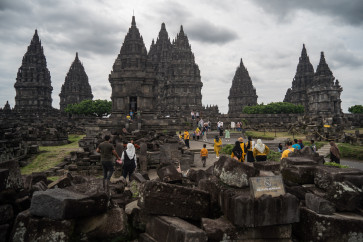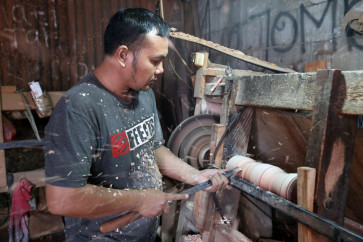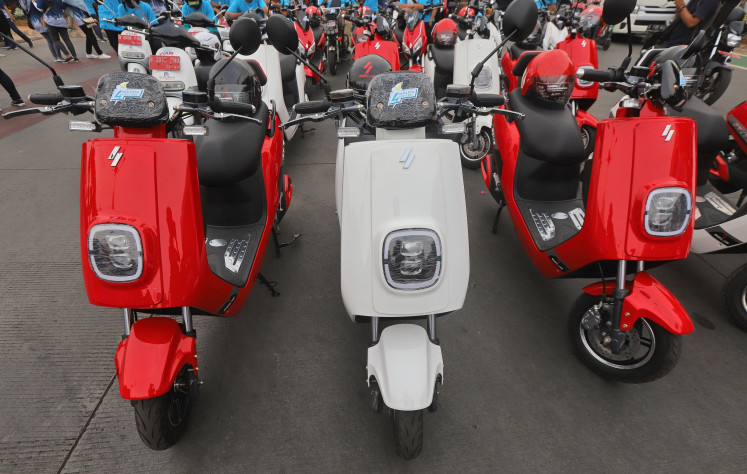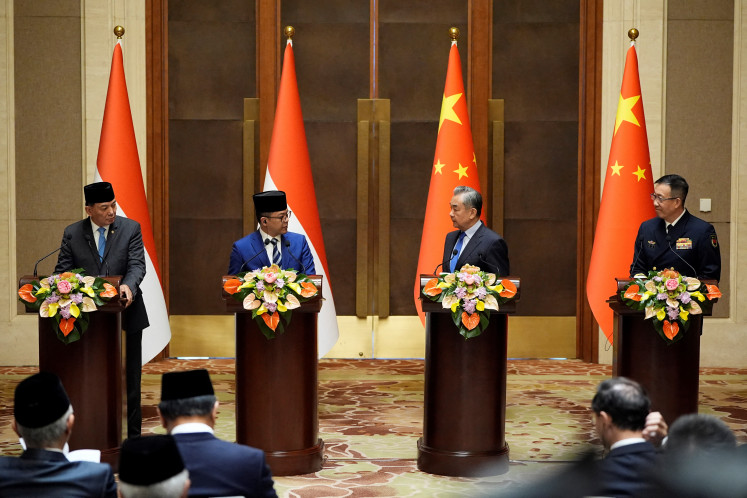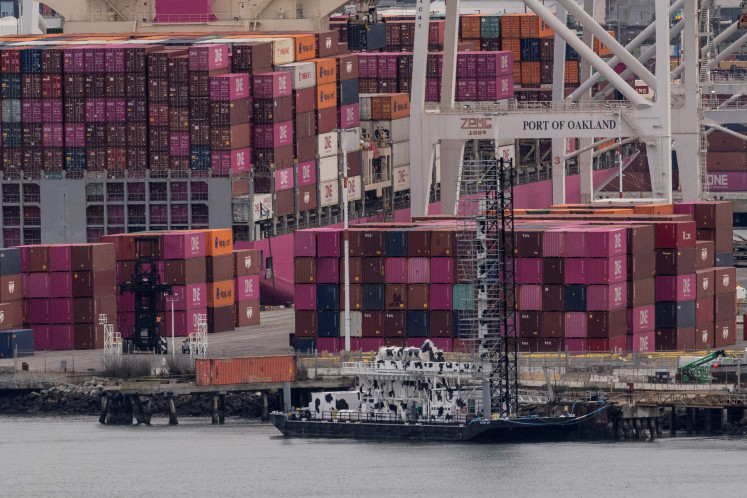Roads less traveled in Pakistan
“Isn’t there a war going on there? Don’t you have to wear a hijab there?” These were some friends’ reactions when they learned about our trip to Karachi, the financial capital of Pakistan.
Change text size
Gift Premium Articles
to Anyone
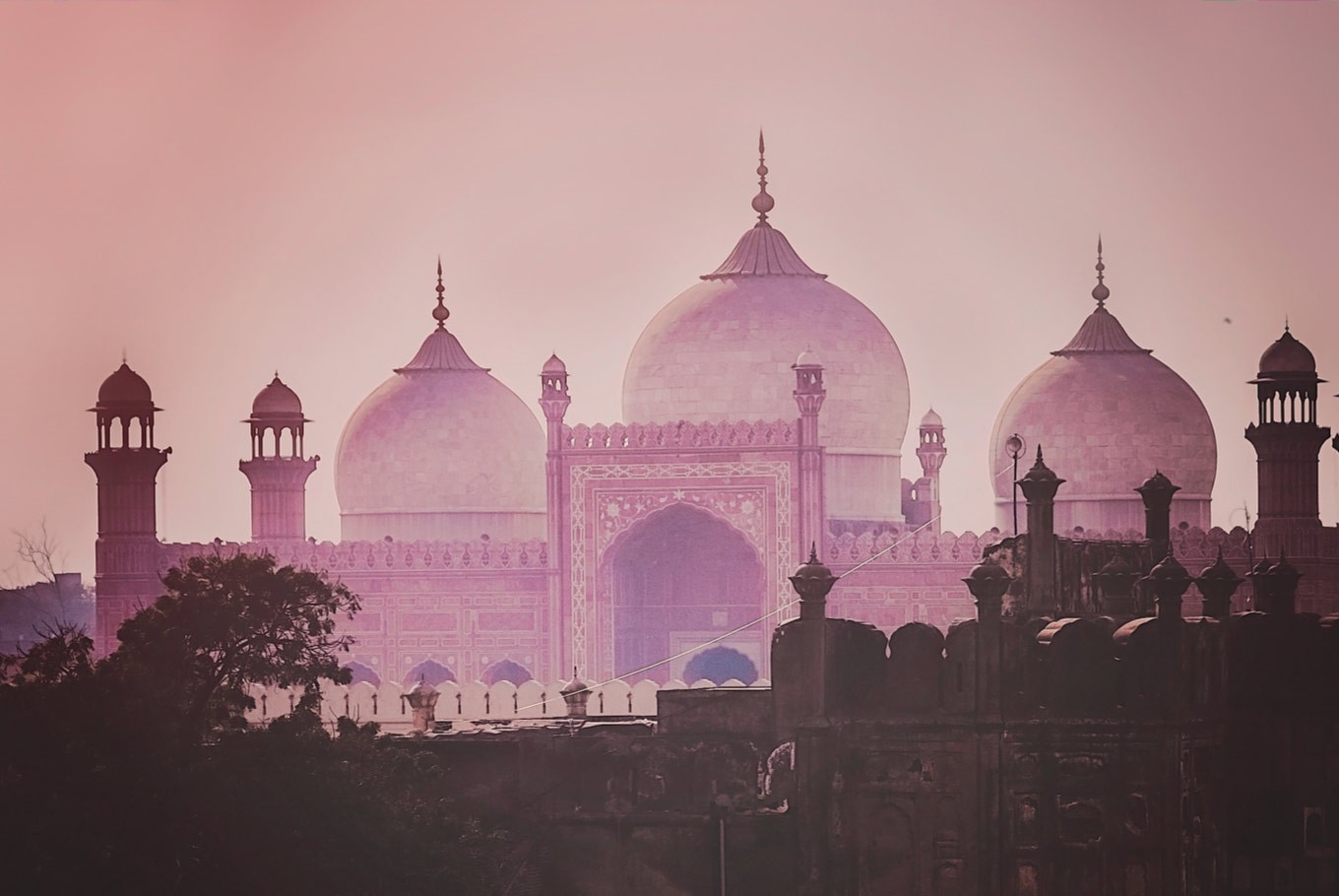 The domes of the Badshahi Mosque or Emperor Mosque grace the landscape of Lahore, capital of the Pakistani province of Punjab. The mosque was built in 1673 by the Mughal Emperor Aurangzeb. (Shutterstock/File)
The domes of the Badshahi Mosque or Emperor Mosque grace the landscape of Lahore, capital of the Pakistani province of Punjab. The mosque was built in 1673 by the Mughal Emperor Aurangzeb. (Shutterstock/File)
A
group of journalists, including The Jakarta Post was invited by the Trade Development Authority of Pakistan to the country’s Trade Expo to check on its strategic products as well as to meet some of the importers and suppliers, including cotton trader Spinwell International, cotton producer Sindh Agro Industries and rice producer NY Company. Here is the report.
“Isn’t there a war going on there? Don’t you have to wear a hijab there?” These were some friends’ reactions when they learned about our trip to Karachi, the financial capital of Pakistan.
Pakistan may sound like a random choice of travel destination. It is not a popular destination nor is it known as the safest place to go. But the South Asian country has a lesser-known rich culture and warm beautiful people.
The world’s second-biggest Muslim country after Indonesia does indeed have border disputes with its neighbor India to the northeast and Afghanistan to the west, resulting in clashes near the borders, but the rest of the country have been enjoying peaceful lives since it gained independence from Britain in 1947.
Being in Pakistan may feel like being in a different world; a rather old one, where once the world’s oldest Indus River civilization dating back to 3,000 B.C. fused with the migrating Indo-Aryan peoples.
The democratic country saw successive invasions from various nations before the Brits came in, including the Greeks and Arabs who brought Islam, the majority religion now.
Even so, the minority Hindus and Christians claim to see a good deal of tolerance so wearing a hijab is not a must here.
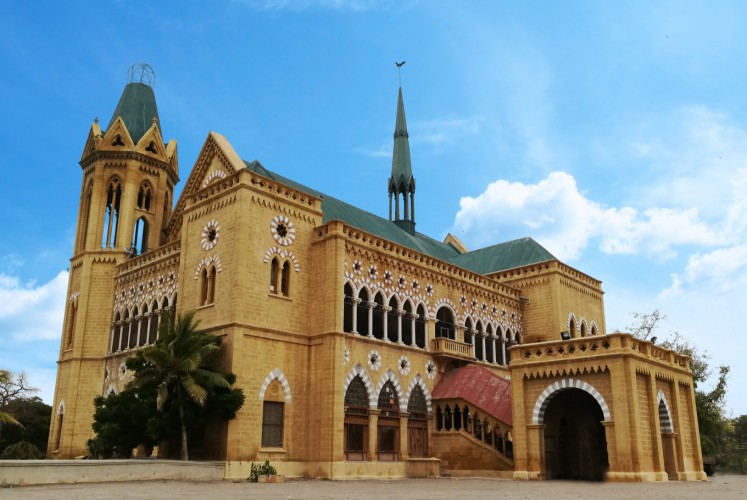
The country’s colonial past has obviously affected the architecture and outlook in Karachi, the capital of Sindh province.
Palm trees, dull-looking light brown and yellow buildings, Mediterranean-style and British colonial architecture, building ruins, AK-47-wielding military, police and security people — you can easily spot all these things along the way from Jinnah International Airport to Club Road, where all the five-star hotels and historical buildings are.
Flocks of birds, from crows to sparrows and starlings, are everywhere in Karachi’s sky, especially its public parks with their Mediterranean benches and palm trees on wide green empty spaces. These places are full of merry people picnicking and playing cricket in the evening.
The Indonesian importers associated the view with Jakarta in the 1980s, when old buildings and ruins were everywhere, given its construction style and desert climate — hot in the afternoon and cool at night, just like Jakarta without the humidity.
The sight of colorful trucks with carved wooden doors and buses decorated with fancy glittering metallic accessories caught our eye, besides the other traditional means of transportation such as auto-rickshaws, donkey-pulled carts as well as all the RX-King lookalike motorcycles.

The travel warnings and concerns about traveling to Pakistan proved rather misleading as we enjoyed interacting with locals to learn about their culture and roots while doing street photography.
“For years we haven’t seen any conflict. We are very much happy and peaceful here,” said Asha Bankar, a 20-year-old Hindu who was praying at Lakshmi Narayan temple.
Pakistan’s national language is Urdu, with English also being an official language. Urdu sounds like an Indian language but less tonal.
The Pakistan Embassy in Indonesia told us to have some local people with us when walking around the town to make us feel safer. We found Pakistani people to be warm, friendly and laid back. Almost everywhere we went, people asked for selfies and chatted with us.
Men were just chilling, sitting in their shalwar (baggy trousers) and kameez (long shirt) in front of closed shops at Empress Market, known for cheap garments and staple goods, as it was the day of Ashura, an Islamic holiday to commemorate the death of martyr Hazrat Imam Hussain. Cellular service was suspended for the day as a security measure.

Youngsters in T-shirts and jeans were hanging out in front of a closed shop, maybe waiting for the right time to go to nearby Clifton Beach that would have camels in the evening, or to McDonalds, Burger King or the art gallery located near the upscale Defence Estate. Here, malls are open from around noon to midnight.
Due to its rooted milk tea culture, there is no Starbucks here, but a lot of must-visit street restaurants along the Boat Basin area, where families were sipping the national drink complete with poori and eating cheese paratha bread and various dips from cholay and potato curry to halva.
Compared to Indian food, Pakistani food has a milder curry taste and milder spices, which may suit the tastes of many Asians.
The country is also known for its agricultural produce such as long-grain rice, wheat, sugar, fruit and cotton, much of which are planted in Tando Adam, a small town a three-hour drive from Karachi, with Sindh Agro Industries and NY Company as some big players.
Besides agriculture, Pakistan’s economy is driven by garments, surgical instruments and sports goods as well as the music industry, which produced that easy-listening “Har Zulm” by Sajjad Ali and the funky PPP version of “Dila Teer Bija.”

